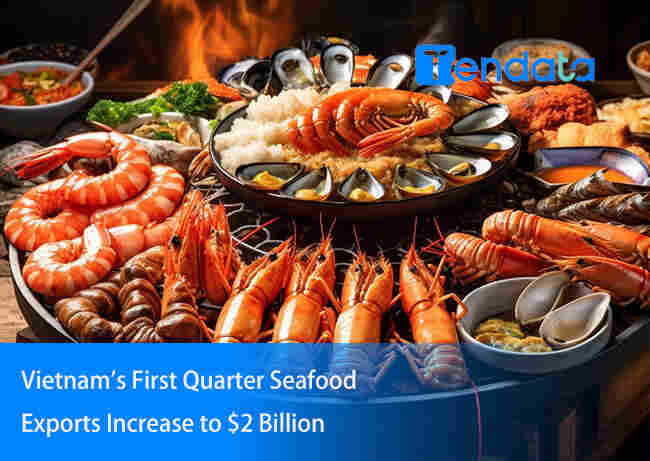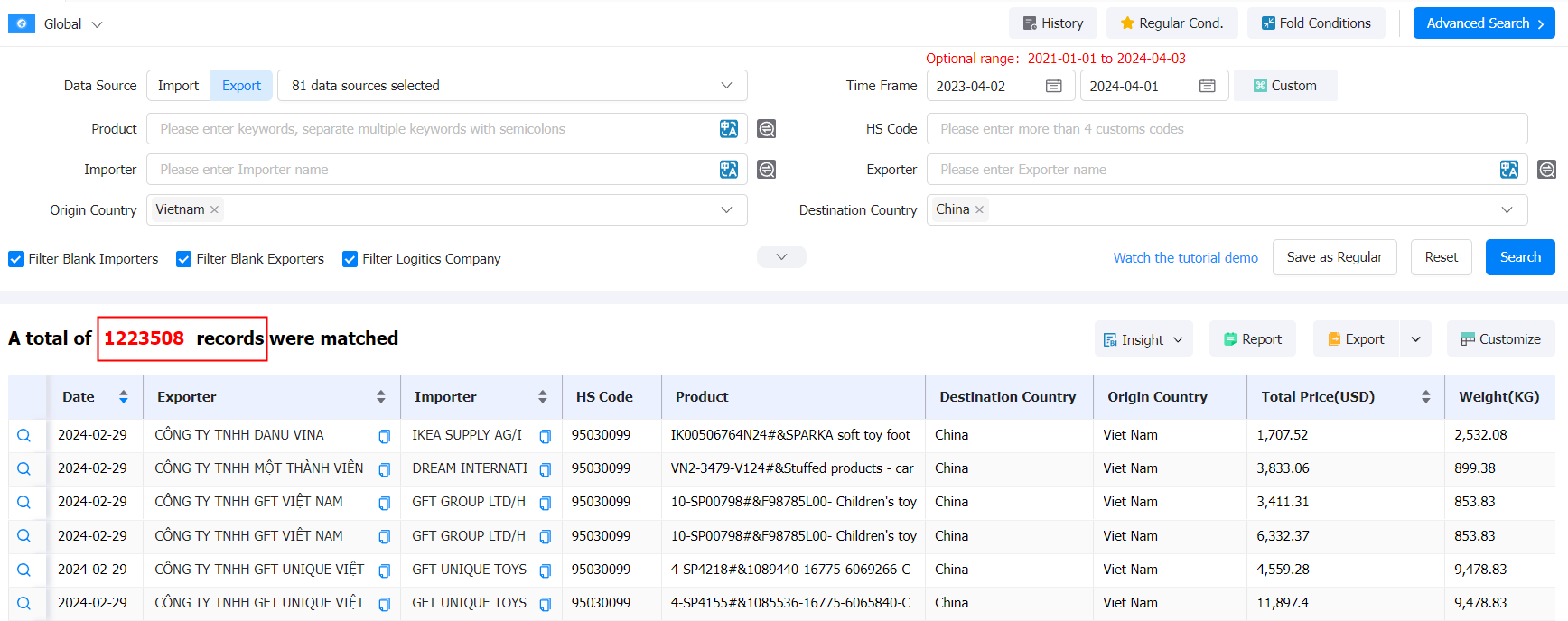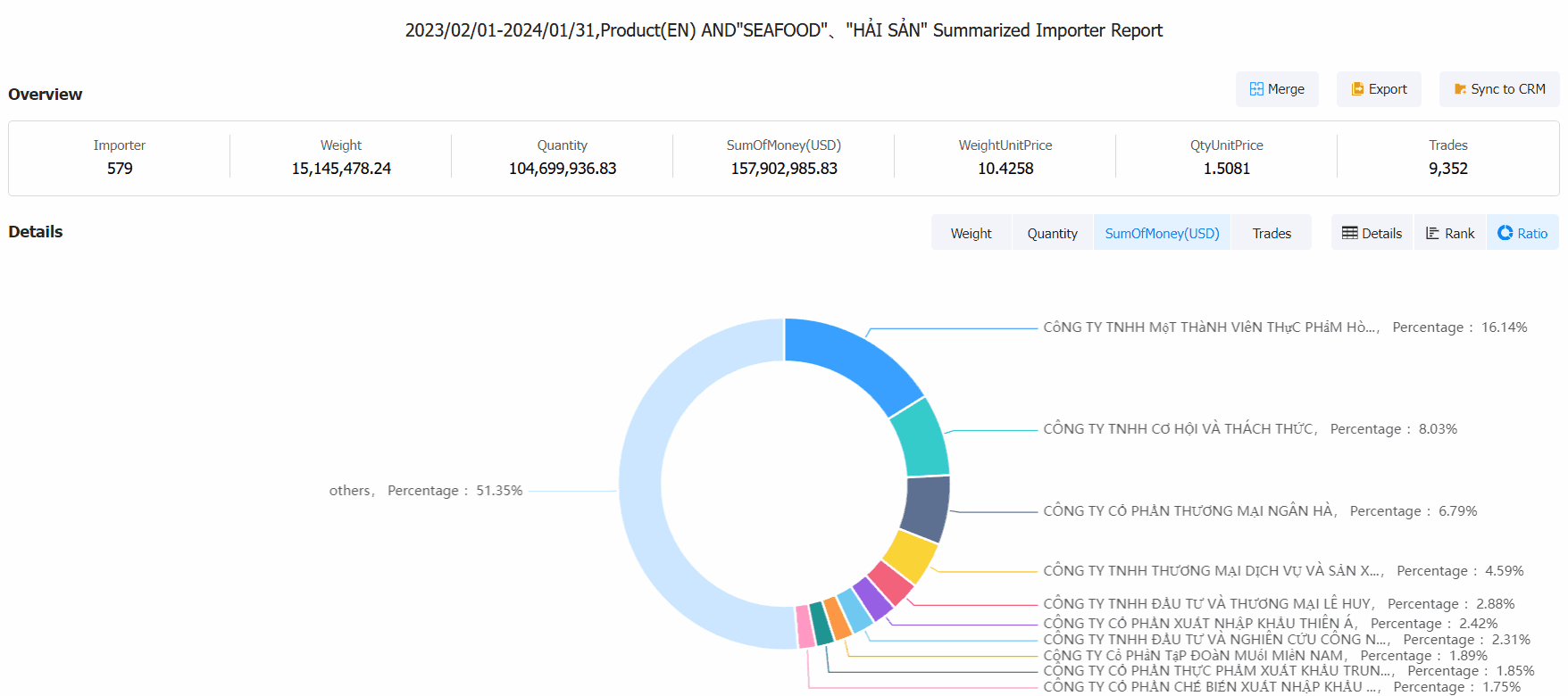 Export News
Export News
 2024-04-03
2024-04-03
Querying Vietnam Customs data, seafood exports in the first quarter reached nearly $2 billion, representing an 8% year-on-year increase.
The United States, Japan, and Hong Kong SAR, China, are the top three importing countries.
Exports to the United States grew by 16%, reaching $330 million, with exports of shrimp, tuna, catfish, and crab increasing by 13-53%. According to Vietnam Customs data, catfish prices to the United States rebounded after hitting a low at the end of last year, and whiteleg shrimp export prices also saw a slight increase, although still relatively low compared to the five-year average.
Last month, the US Department of Commerce also announced preliminary countervailing duties on shrimp imports from Vietnam, India, and Ecuador, with Vietnam's overall rate significantly lower than the other two countries.
For the Chinese market, catfish, whiteleg shrimp, lobster, ribbon fish, and crab are the main seafood exports. In the first quarter, compared to the same period last year, exports of lobster, crab, and whiteleg shrimp increased by 11 times, 7 times, and 2.5 times, respectively.
Whiteleg shrimp and crab exports to Japan showed positive signs, with increases of 20% and 23%, respectively. Vietnamese catfish is becoming increasingly popular in Japan, with exports growing by 25% in the first quarter.
According to Vietnam Customs data, tuna exports to the European Union and South Korea increased by 27% and 15%, respectively. Tuna exports to major markets remained stable, with increases of 30% and 9% to the United States and Japan, respectively.
Exports of squid and octopus to South Korea increased by 16%, while exports to other major markets such as the United States and Japan decreased by 3% and 21%, respectively.

Is importing seafood from Vietnam profitable? How can I conduct seafood business with Vietnam?
Before engaging in seafood business with Vietnam, several factors need to be considered: local transportation infrastructure, consumer acceptance of seafood, and the competitive landscape.
When considering seafood business with Vietnam, referencing competitors' development paths is a good approach to avoid unnecessary detours. How to reference competitors' seafood business? Here are some steps and suggestions:
1. Identify competitors: Firstly, you need to access Vietnam Customs data. Tendata provides Vietnam Customs data, including importers, exporters, quantities, values, source countries, destinations, etc. By logging into Tendata Customs data, you can find all importers and exporters who have engaged in seafood import-export trade with Vietnam in the past year.
Tendata offers two ways to help you accurately identify competitors:
(1) By selecting the specific country "Vietnam," you can view the supply chain of Chinese importers who have imported seafood from Vietnam in the past year, thereby identifying competitors.
(2) You can also choose "import" from all countries globally and set Vietnam as the source country to identify importers who have imported seafood from Vietnam to China.
After obtaining a list of seafood importers, compare the seafood trade volume, prices, trade trends, and supply chain situations of these competitors to determine competitors that fit your positioning.

2. Conduct background checks on competitors:
Various report services provided by Tendata can help you conduct competitor research.
(1) Analyze competitors' market shares: Study competitors' market shares and positions in the Vietnamese seafood market. Check Tendata's "Summarized Importer Report," which shows the market shares of all seafood importers trading with Vietnam.

(2) Investigate competitors' products and services: Understand information such as seafood types, prices, trade volumes, etc., purchased by competitors based on HS codes. Click on the company name and view this information on Tendata.
(3) Evaluate competitors' customer bases: Understand competitors' target customer groups, market positioning, and sales channels through the supply chain. In the company profile provided by Tendata, check competitors' supply chain situations.
(4) Contact and communicate with competitors: If possible, contact and communicate with competitors to understand their business models, experiences, market insights, etc.Tendata provides contact information for competitors' executives, making it easy for you to contact them via social media, phone, email, etc.
Through the above methods, you can gain a comprehensive understanding of competitors' seafood businesses and develop corresponding market strategies and business plans to enhance your competitiveness.
Category
Leave Message for Demo Request or Questions


 T-info
T-info T-discovery
T-discovery

 My
Tendata
My
Tendata Market Analysis
Market Analysis Customer
Development
Customer
Development Competitor
Monitoring
Competitor
Monitoring Customer Relationship
Customer Relationship





































































































































